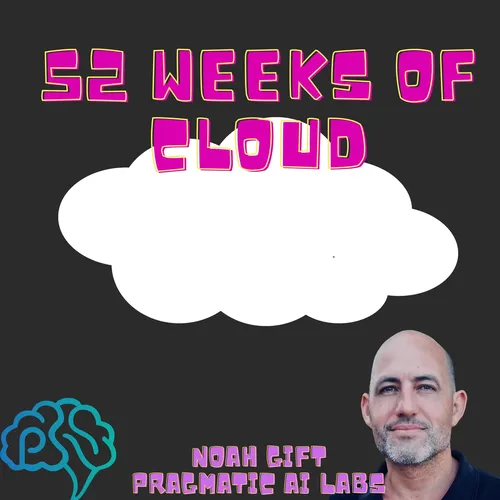The Automation Myth: Why Developer Jobs Aren't Being Automated
- Author
- Pragmatic AI Labs
- Published
- Thu 27 Feb 2025
- Episode Link
- podcast.paiml.com
The Automation Myth: Why Developer Jobs Aren't Going Away
Core Thesis
- The "last mile problem" persistently prevents full automation
- 90/10 rule: First 90% of automation is easy, last 10% proves exponentially harder
- Tech monopolies strategically use automation narratives to influence markets and suppress labor
- Genuine automation augments human capabilities rather than replacing humans entirely
Case Studies: Automation's Last Mile Problem
Self-Checkout Systems
- Implementation reality: Always requires human oversight (1 attendant per ~4-6 machines)
- Failure modes demonstrate the 80/20 problem:
- ID verification for age-restricted items
- Weight discrepancies and unrecognized items
- Coupon application and complex pricing
- Unexpected technical errors
- Modest efficiency gain (~30%) comes with hidden costs:
- Increased shrinkage (theft)
- Customer experience degradation
- Higher maintenance requirements
Autonomous Vehicles
- Billions invested with fundamental limitations still unsolved
- Current capabilities work as assistive features only:
- Highway driving assistance
- Lane departure warnings
- Automated parking
- Technical barriers remain insurmountable for full autonomy:
- Edge case handling (weather, construction, emergencies)
- Local driving cultures and norms
- Safety requirements (99.9% isn't good enough)
- Used to prop up valuations despite lack of viable full automation path
Content Moderation
- Persistent human dependency despite massive automation investment
- Technical reality: AI flags content but humans make final decisions
- Hidden workforce: Thousands of moderators reviewing flagged content
- Ethical issues with outsourcing traumatic content review
- Demonstrates that even with massive datasets, human judgment remains essential
Data Labeling Dependencies
- Ironic paradox: AI systems require massive human-labeled training data
- If AI were truly automating effectively, data labeling jobs would disappear
- Quality AI requires increasingly specialized human labeling expertise
- Shows fundamental dependency on human judgment persists
Developer Jobs: The DevOps Reality
The Code Generation Fallacy
- Writing code isn't the bottleneck; sustainable improvement is
- Bad code compounds logarithmically:
- Initial development can appear exponentially productive
- Technical debt creates logarithmic slowdown over time
- System complexity eventually halts progress entirely
- AI coding tools optimize for the wrong metric:
- Focus on initial code generation, not long-term maintenance
- Generate plausible but architecturally problematic solutions
- Create hidden technical debt
Infrastructure as Code: The Canary in the Coal Mine
- If automation worked, cloud infrastructure could be built via natural language
- Critical limitations prevent this:
- Security vulnerabilities from incomplete pattern recognition
- Excessive verbosity required to specify all parameters
- High-stakes failure consequences (account compromise, data loss)
- Inability to reason about system-level architecture
The Chicken-and-Egg Paradox
- If AI coding tools worked as advertised, they would recursively improve themselves
- Reality check: AI tool companies hire more engineers, not fewer
- OpenAI: 700+ engineers despite creating "automation" tools
- Anthropic: Continuously hiring despite Claude's coding capabilities
- No evidence of compounding productivity gains in AI development itself
Tech Monopolies & Market Manipulation
Strategic Automation Narratives
- Trillion-dollar tech companies benefit from automation hype:
- Stock price inflation via future growth projections
- Labor cost suppression and bargaining power reduction
- Competitive moat-building (capital requirements)
- Creates asymmetric power relationship with workers:
- "Why unionize if your job will be automated?"
- Encourages accepting lower compensation due to perceived job insecurity
- Discourages smaller competitors from market entry
Hidden Human Dependencies
- Tech giants maintain massive human workforces for supposedly "automated" systems:
- Content moderation (15,000+ contractors)
- Data labeling (100,000+ global workers)
- Quality assurance and oversight
- Cost structure deliberately obscured in financial reporting
- True economics of "AI systems" include significant hidden human labor costs
Developer Career Strategy
Focus on Augmentation, Not Replacement
- Use automation tools to handle routine aspects of development
- Redirect energy toward higher-value activities:
- System architecture and integration
- Security and performance optimization
- Business domain expertise
Skill Development Priorities
- Learn modern compiled languages with stronger guarantees (e.g., Rust)
- Develop expertise in system efficiency:
- Energy and computational optimization
- Cost efficiency at scale
- Security hardening
Professional Positioning
- Recognize automation narratives as potential labor suppression tactics
- Focus on deepening technical capabilities rather than breadth
- Understand the fundamental value of human judgment in software engineering
🔥 Hot Course Offers:
- 🤖 Master GenAI Engineering - Build Production AI Systems
- 🦀 Learn Professional Rust - Industry-Grade Development
- 📊 AWS AI & Analytics - Scale Your ML in Cloud
- ⚡ Production GenAI on AWS - Deploy at Enterprise Scale
- 🛠️ Rust DevOps Mastery - Automate Everything
🚀 Level Up Your Career:
- 💼 Production ML Program - Complete MLOps & Cloud Mastery
- 🎯 Start Learning Now - Fast-Track Your ML Career
- 🏢 Trusted by Fortune 500 Teams
Learn end-to-end ML engineering from industry veterans at PAIML.COM
